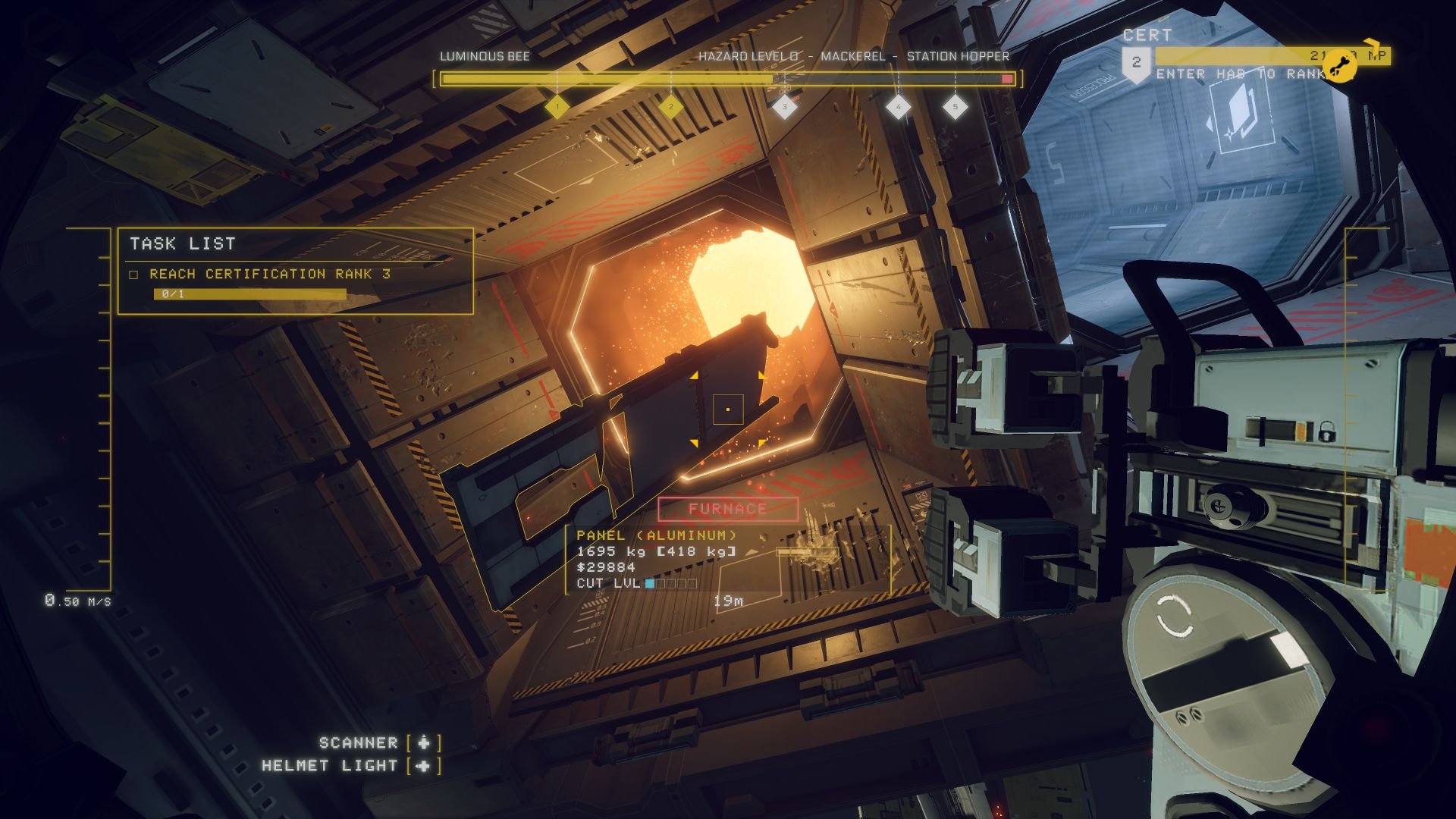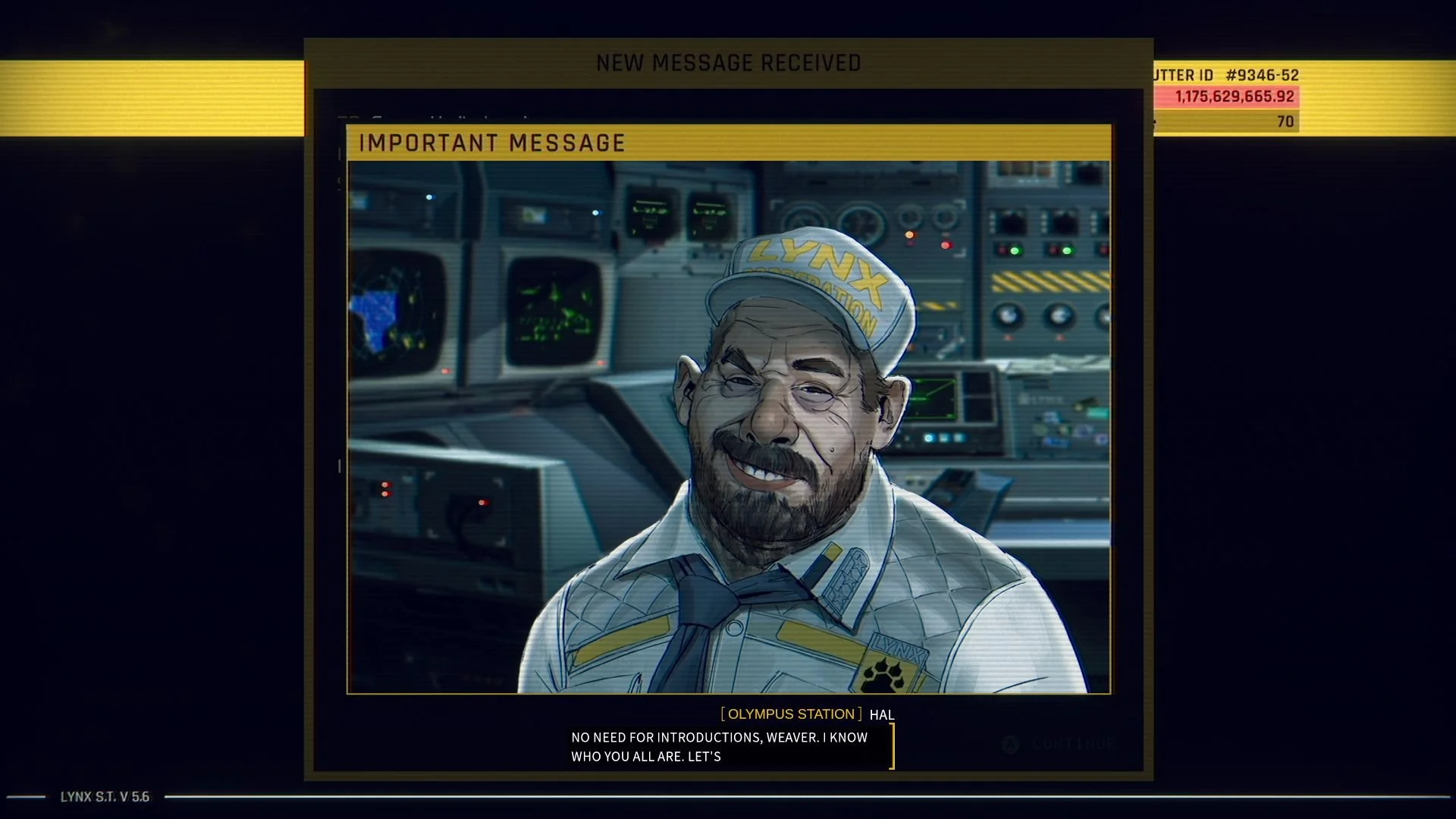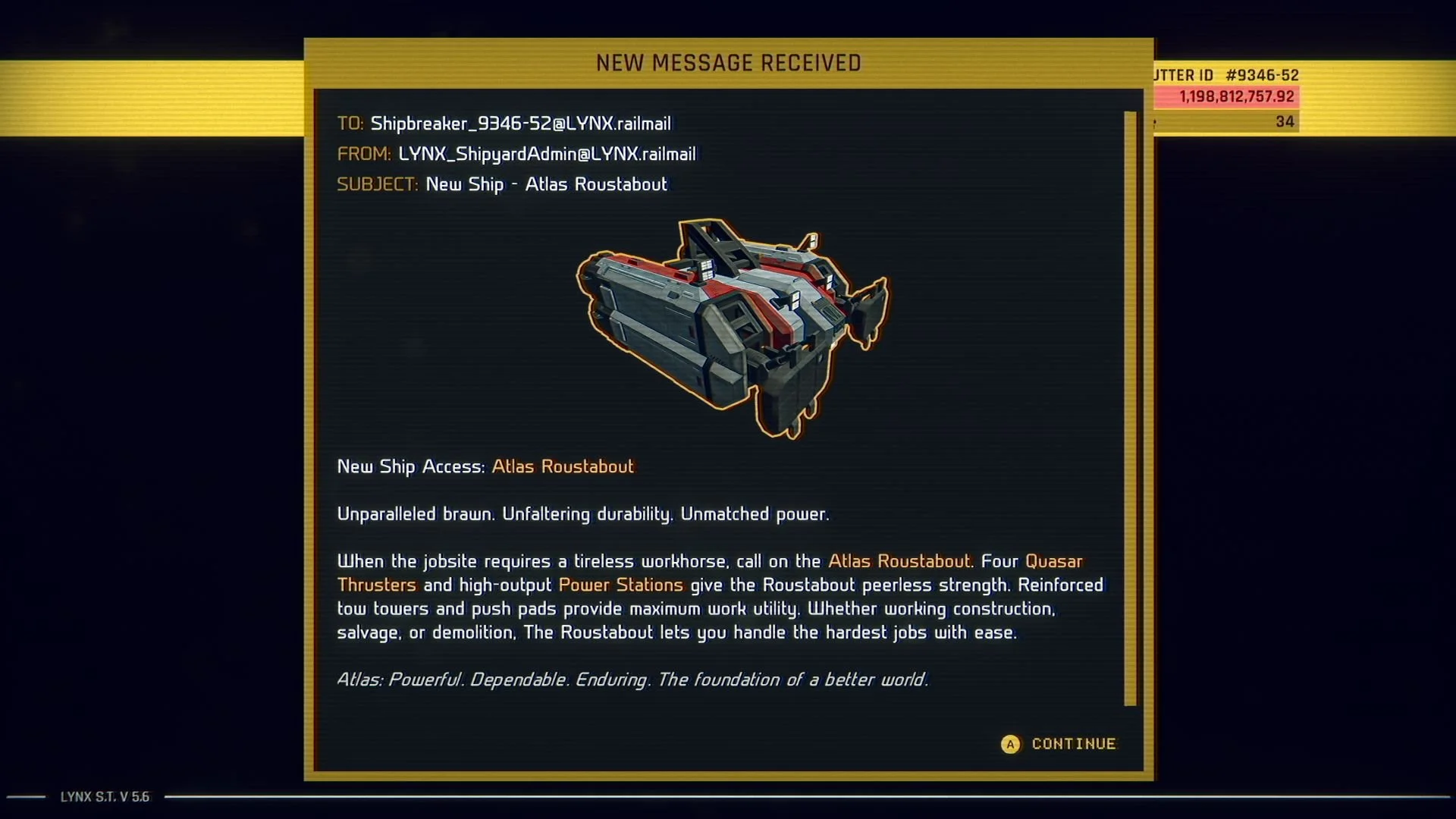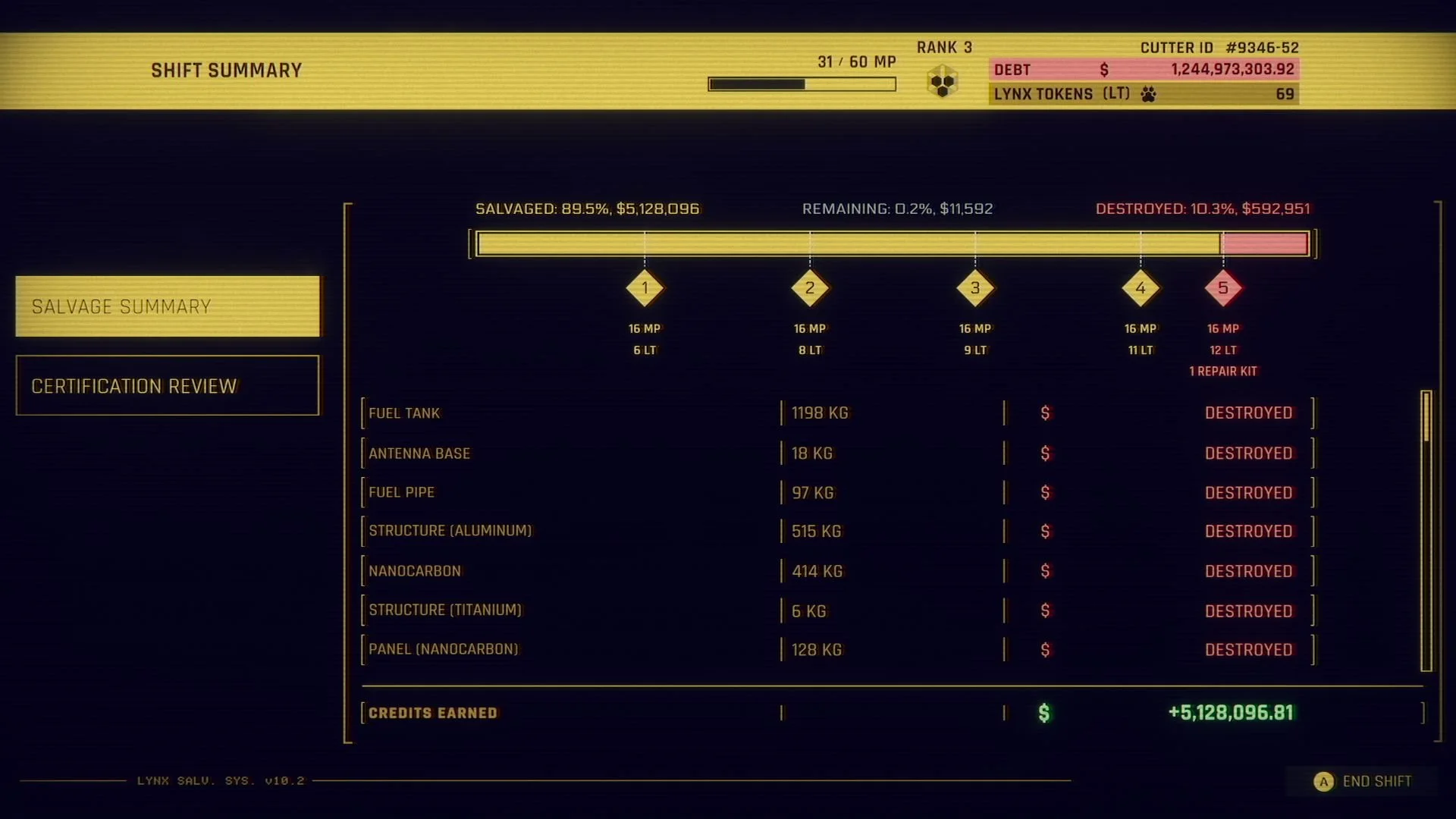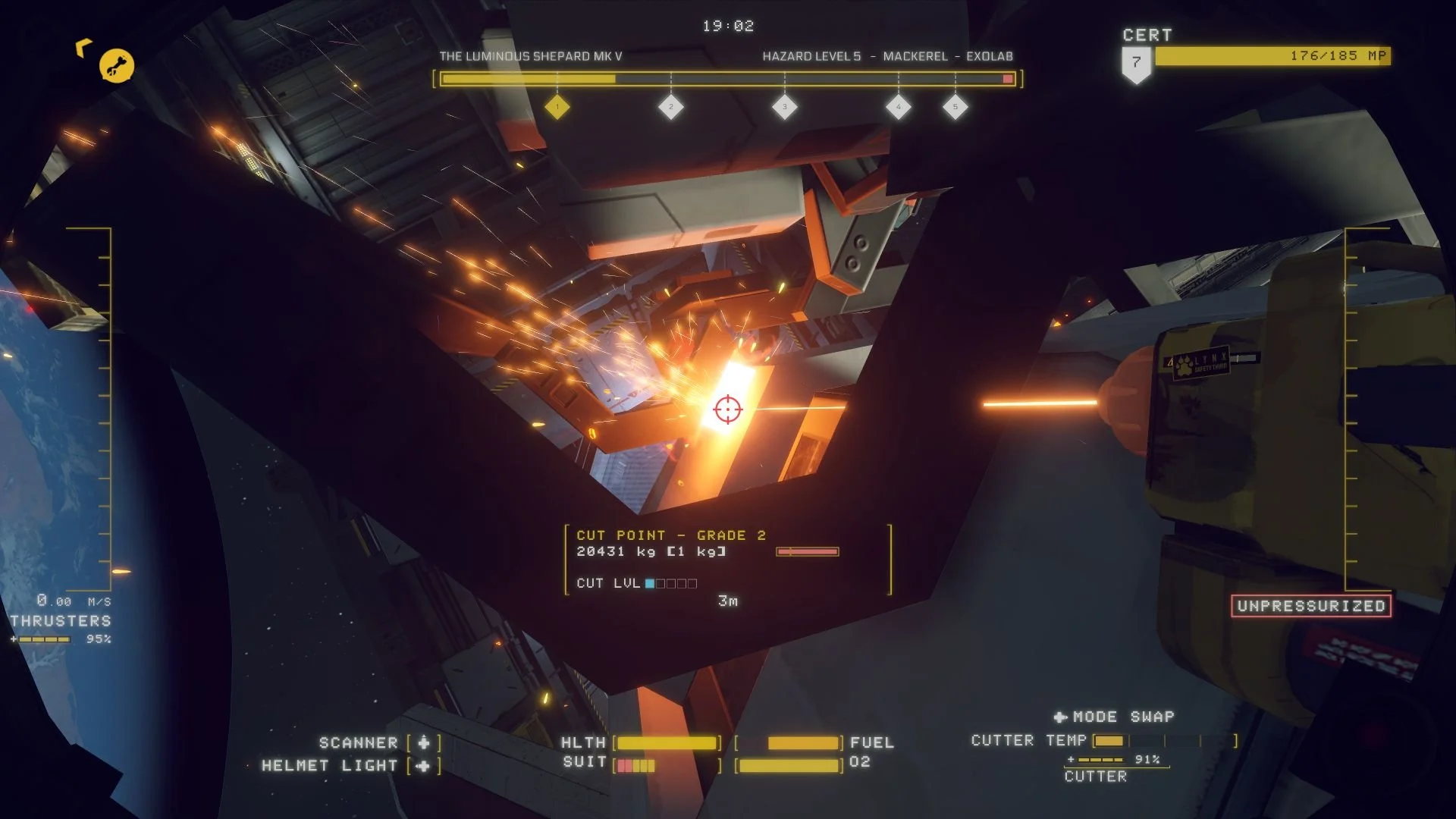In space, no one can hear you clock in.
Hardspace Shipbreaker has a great deal in common with another game I played this year; Powerwash Simulator. While the games couldn’t be any more different from glancing at a trailer or a screenshot or two. the mundane act of performing simple labor still places both titles in a very similar lane. Stepping out of my airlock into the vastness of space to dismantle a lifeless ship piece by piece kept my interest for several hours, even if some tedium started to present itself.
For the first few hours, Hardspace Shipbreaker is both calming and yet filled to the brim with palpable levels of tension as you move away from lifeless abandoned vessels, tearing them apart for scraps, to ships that are pressurized or loaded with numerous hazards. Thankfully, the game does a decent job at conveying those dangers and rolling out tutorials as you encounter these new flavored objectives. Making sure you depressurize a ship or clear a way to pull out its reactor can lead to some brutally tension-filled moments that serve their purpose for quite some time.
If I had to level one complaint towards my time with Hardspace Shipbreaker, it is that while the story is literally built around performing repetitive labor, a certain level of tedium does start to infect how I felt about the game at times. While that is essentially the best case of immersion I think I’ve ever felt in a game, it presents itself that way for the wrong reasons. I can honestly say I was never bored here, but a bit more variety in how I was dismantling a ship, or even additional objectives to shake things up, could have gone a long way to keeping me enthralled through the entire 30 hours I logged pushing through the campaign.
From the game’s first few moments, I couldn’t help but feel its similarities to Firefly. The music and tone of what the game was doing, mixed with a few solid moments of humor, felt not only intentional but familiar in all the right ways. Say what you will about Whedon himself, but Firefly was always something I was a huge fan of and Hardspace Shipbreaker does a good job at invoking the tone of certain aspects of the show in its presentation, its characters, and especially its twangy soundtrack.
The average worker versus big mega-corp narrative is pretty entertaining in its execution, even if much of it is wildly telegraphed at times. You’ll have your fellow Shipbreakers in your ear via the radio or through several emails at your terminal offering assistance on how to do your job, but also that of joining a secret union that looks to undermine the company’s mission. This leads to an inquiry by the company itself as they send a middle manager your way to expose this potential union, putting the entire group on edge and in harm’s way. The game does a good job at conveying the company as this “worker first” corporation, labeling you as a member of its family, and that unions are destructive forces that can tear that apart. This coming from a videogame amidst the current climate of the industry is a pretty topical idea that hits home.
Nearly everything you tackle at your end is covered in fees from head to toe. Everything from your habitat to your character’s food, to your equipment, is part of a rental system as while you are working endlessly to chip away at your debt, everything you do to keep working does counter some of your gains. You may pull in an 8 million dollar payday, but when you have nearly a million owed in fees for that job, well, you start to see how little of an impact you are actually making.
However, that is effectively the point of the whole experience and one it expertly nails. I found the company ‘speak’ to be crafted in such a believable and yet humourous manner, especially the line about how injuring yourself can lead to lower profits as opposed to a statement about your own personal well-being. Given that your death simply has you cloned and back out on the job, conveniently with numerous fees added for the process, it is the cherry on top that makes this game not only hilarious but extremely relatable to anyone who has ever worked a nine-to-five retail job.
Apart from its story, or decorating your own personal living quarters called the habitat with posters and plushies, the bulk of your time with Hardspace Shipbreaker is the dismantling of ships and salvaging parts and pieces to contribute to not only the company’s bottom line but also to chip away at your own insane debt. While you can complete the campaign while still owing the LYNX Corporation a vast amount of money, there is an option available to those who have put in the work to better your life just that little bit.
Moving around the shipyard with a full six degrees of movement certainly takes a while to get the controls down. I lost track of how many times I would press B to break, even those I fully knew that holding in both sticks was the way to halt your movement. You can move around, up, down, back, and rotate around to orientate yourself to the job at hand. You’ll be outfitted with a variety of tools; a Modular Laser Cutter, Handheld Utility Grapple, Cross-Spectrum Scanner, and once you earn them, the ability to set off Demo Charges. In fact, the Middle Manager, who has this voice that sounds like Vincent D’Onofrio’s Edgar from Men in Black, grants you access to this tool, despite it being a major hazard in its own right.
Despite the various hazards, inertia is going to be your main antagonist here as not only do you have to worry about your own movement, but that of various parts floating about or using the grapple line to snap back an item that is giving you trouble. And, should you attempt to use the grapple to boost an object forward, while it is still securely locked down, you’ll find yourself pushed backward, and yeah, that can result in some unfortunate deaths, especially if you get propelled into the furnace behind you. You also gain the use of tethers that can allow you to use a charged energy line to pull objects towards a goal. I would often set a tether to one of the drop-off points to salvage an object and then dive back into the vessel to clear out some easy-to-snag objects, like chairs, terminals, or stray pieces of metal begging to be melted down.
As you approach a ship for the first time, you’ll want to scan it. You’ll also pick from a list of available ships that are appropriate for your rank, detailing what sorts of hazards you are going to encounter. You’ll eventually have to depressurize rooms, remove reactors that are set to explode, flush fuel lines, as well as watch out for various items that can explode, cutting into your profits as the ship suffers a catastrophic failure and gets obliterated into pieces, hopefully without you being caught in the blast. Thankfully the game does a good job at rolling out the various ship types, and the hazards you can expect to find, and teaches you how to deal with those objectives from the onset.
Once you have an understanding of the craft and what to expect, you’ll start to break down the ship. You’ll do this by cutting into small yellow anchors that burn away with your laser. Some of these will be fitted next to hazards, so you will want to be cautious as you safely dispose of such issues. By detaching a large chunk of the ship, you’ll often see it float slightly off, causing you to move around to catch it, grapple it, and send it to either the blue area for processed materials, a furnace for scrap, or a green zone called the Barge that is the destination for reusable items such as terminals, chairs, and more. The game does a good job at conveying what goes where via your scanner and on-screen prompts, so you are never left to wonder what is what.
While the premise is the same across all vessels, the ships vary in a variety of different formats, designs, and structures. This means that your order of what to tackle first may vary, albeit slightly, making you often approach each new ship as a brand new puzzle. However; as you get into the rhythm of taking ships apart and zipping around to burn away at every anchor, and chucking the appropriate piece in the appropriate bin, you’ll start to realize that after much of that initial problem-solving, you’ll still tackle each ship in the exact same way, and it can get a bit tedious, especially for a 25-30 hour campaign.
Still, cutting into walls and seeing them shift and float around is novel, as is using a series of tethers to pry off a huge chunk of debris. Accidentally setting off a chain reaction that has your ship explode or set on fire is a fun time, especially if you can make it out alive. You can accidentally or intentionally send pieces to the wrong bin, impacting the profits or milestones you are attempting to reach, but after a while, I started to ignore the small stuff like lights or glass, sending them to the bin alongside the large chunks they are attached to.
To keep you focused on depositing the correct materials in the appropriate bins, you have a bar at the top that details your overall success rate. By efficiently harvesting your salvage, you’ll earn upgrade tokens to improve your equipment as well as earn experience to rank up, offering you access to bigger and more profitable ventures. LYNX Tokens can be spent to upgrade your laser, grapple, thrusters, scanner, helmet, work suit, and demo charges. There are tech trees that boost various passive skills like improving your thruster capacity, or not having your tools wear out so frequently. If you save up enough LYNX Tokens and hit the appropriate rank, you can own your tools and negate the rental fees. You also need to repair your tools after a while, which can be a costly affair. Thankfully, the various ships you find can often have repair kits and other useful items to grab, even if you are told it is against regulations to snag them.
After a while, you’ll earn your own personal ship that has you looking for parts to repair it. It’s an interesting side project, but one that gets taken away from you during the third act, and sadly the game doesn’t replace that objective with anything else to do apart from your job. It’s a shame since having that secondary objective apart from the standard workload was a nice change of pace. You’ll also have special ships that show up that are interesting, but the method as which to tackle them is as basic as lasering off the nuisance.
The campaign can be tackled with a bit of customization and assistance should you require it. The standard mode has a 15-minute timer for your shifts and has you paying close attention to a variety of meters, such as your air supply or how much fuel you have. The 15-minute timer meant that you barely had the time to really get crafty in how you were going to go about your task and this also makes working yourself out of debt to be that much harder as each outing has its own set of fees.
Thankfully, Hardspace Shipbreaker also allows you to take on the campaign via an open shift mode, bypassing the entire 15-minute restraint and even allowing you to choose if you can run out of oxygen or not. I found most ships to take anywhere from an hour to almost two, depending on how detailed the hazards were and the path to eliminate them. The campaign should run you around two dozen ships to reach where the story eventually wraps up.
Apart from the campaign, you can take on the game via a few different options. Limited has you pushing through the story with only 30 lives, whereas No Revival is what it says on the tin. Once in the main mode, you can take on free play to just play around with a ship, or Cutter’s R.A.C.E., which has its own set of leaderboards to compete with your friends and people around the world.
Much like Powerwash Simulator, I found the labor aspects of Hardspace Shipbreaker to be a fairly chill affair, well, apart from having to occasionally hustle out of a ship as it was about to go critical, but otherwise, it’s a game that fits that sort of vibe rather nicely. The narrative about the blue-collar worker versus the company, and how it is always a profits over people affair to be rather well-written and remarkably believable. That said, the true appeal of what Hardspace Shipbreaker offers is the puzzle-like nature of dismantling a ship down to nothing is rather impressive, weaving in and around the vessel in zero-G as you cut and slice into your profits in more ways than one.
Developer - Blackbird Interactive. Publisher - Focus Home Entertainment. Released - May 24th, 2022 (PC), September 20th, 2022 (Xbox and PS) Available On - Xbox Series X/S, PS5, Windows. Rated - (T) Violence. Platform Reviewed - Xbox Series X. Review Access - A review code was provided by the publisher for the purpose of this review.


